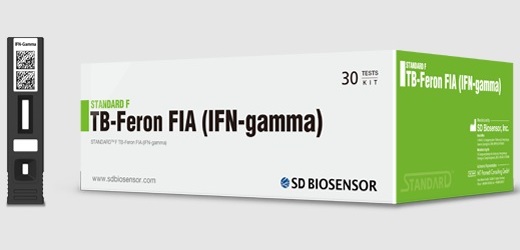New Tuberculosis Test to Expand Testing Access in Low- and Middle-Income Countries
Posted on 15 Mar 2024
Tuberculosis (TB) is one of the top infectious killers worldwide, second only to COVID-19. Keeping track of how well treatment works is key to fighting this disease. However, testing TB samples is tricky because it's highly infectious, requiring special high-security labs known as biosafety level 3 (BSL-3) labs. These labs have special equipment to keep the virus from spreading, but they're expensive and hard to find, especially in low- and middle-income countries where most TB cases are found. This makes fighting TB difficult in the places that need it most. Now, a new test allows testing for TB treatment monitoring to be done outside of a BSL-3 laboratory, potentially making it easier and faster to treat TB worldwide.
The new TB test — called rapid enumeration and diagnostic for tuberculosis (READ-TB) — was disclosed in the Association for Diagnostics & Laboratory Medicine's (ADLM, Washington, DC, USA) Clinical Chemistry journal and has been designed specifically to address the lack of access to labs that meet BSL-3 requirements. The test works by treating sputum (lung mucus coughed up by patients) with acetic acid. This acid kills the TB bacteria but leaves their RNA (genetic material) untouched. A lab worker can then safely check the RNA levels with a machine, which tells how much TB bacteria is in the patient and how well the treatment is working.

Acetic acid is better at preserving RNA than the current gold standard of using guanidium salts for two reasons: it kills the bacteria in just 30 minutes, thus eliminating the need for a BSL-3 lab, and it's just as effective at keeping the RNA safe. The RNA remains stable for 14 days at room temperature and for over a year if frozen at -20°C. This is ideal for labs without the capacity for super-cold storage. Plus, acetic acid is less toxic than guanidium salts, making it safer for lab workers. The READ-TB test isn't just safer and easier; it could also help with TB drug research. By accurately measuring TB RNA levels, scientists can compare different TB drugs or drug combinations more effectively.
"We wanted to improve the assay for integration into diagnostic microbiology laboratories, for use in clinical trials, and to make it tenable in low- and middle-income countries, e.g., where no BSL-3 laboratory exists," the authors of the study write, referring to their earlier test. "READ-TB allows measurement of the molecular bacterial load to now be adopted by routine clinical microbiology laboratories for measuring M. tuberculosis bacterial load in sputum."
Related Links:
ADLM














